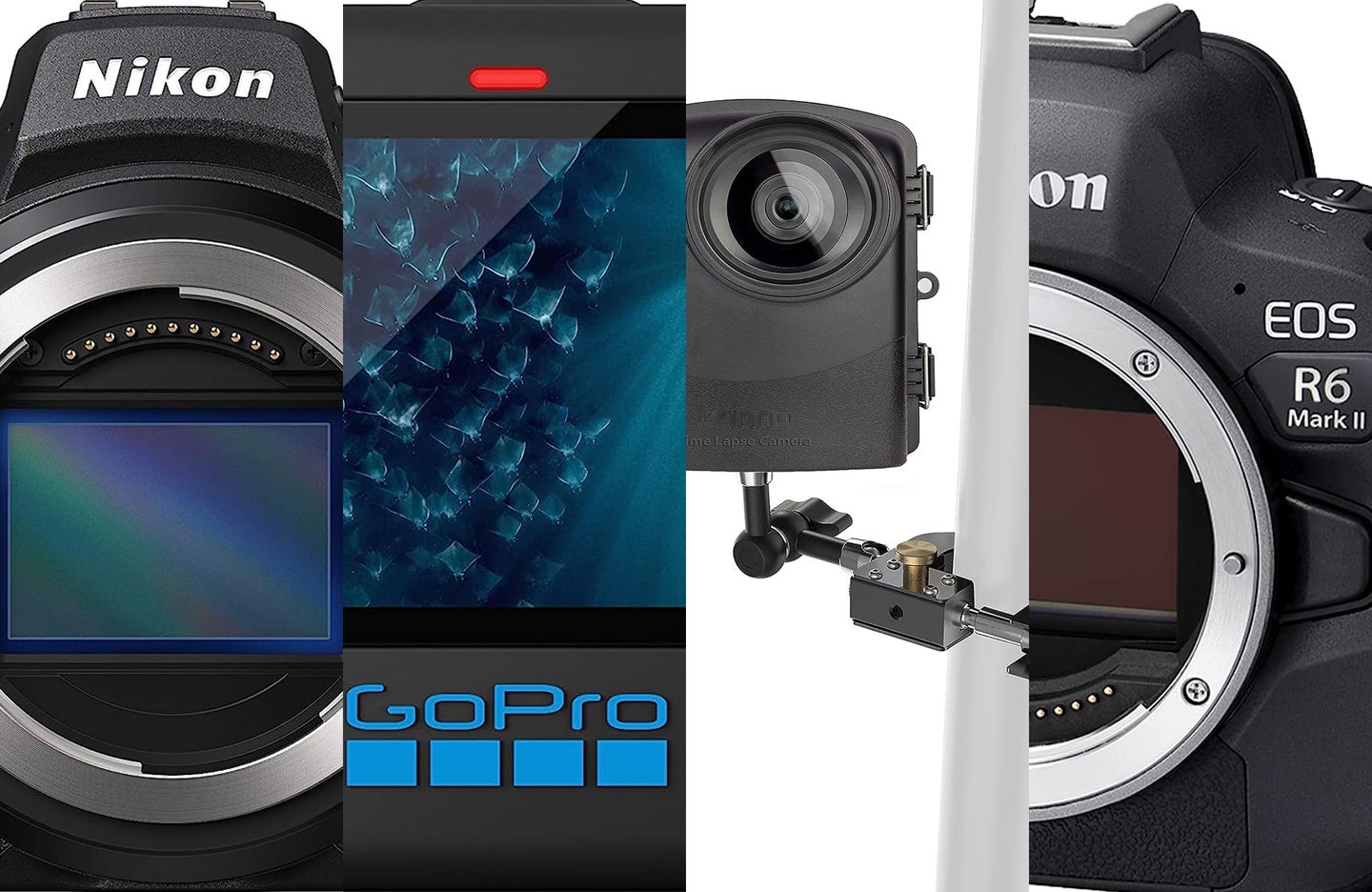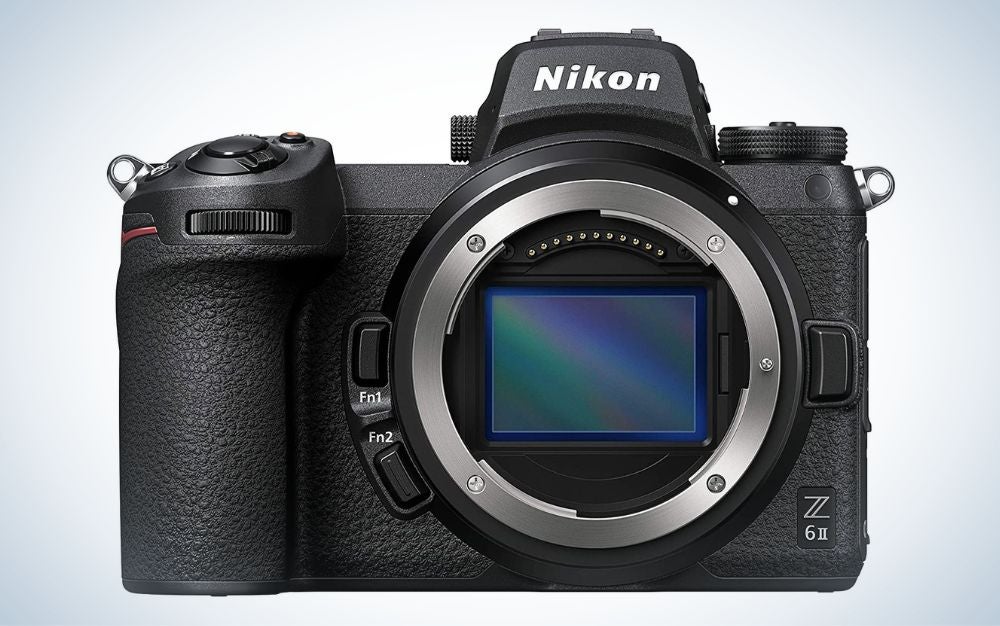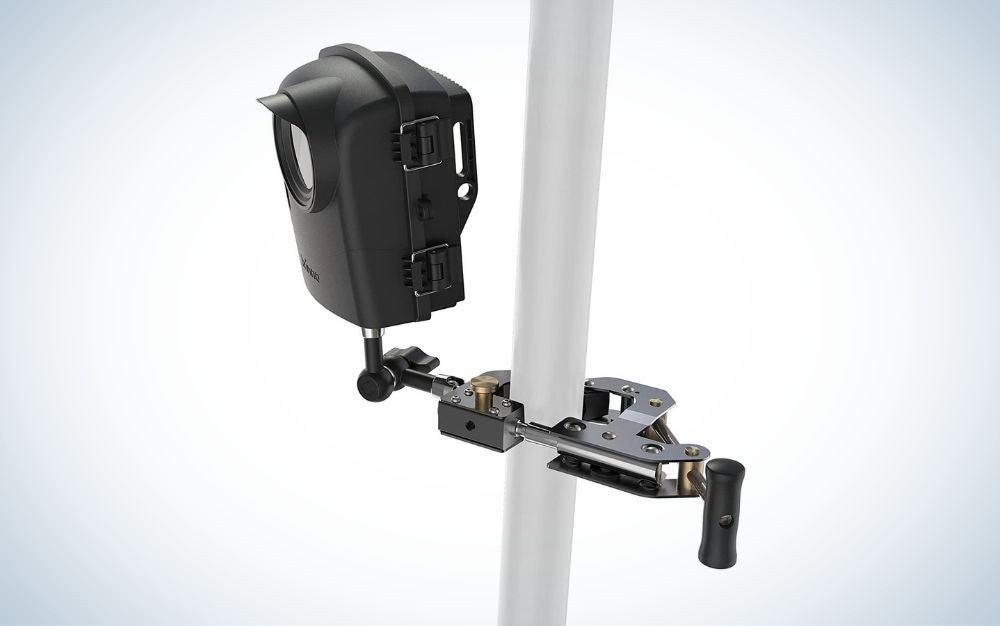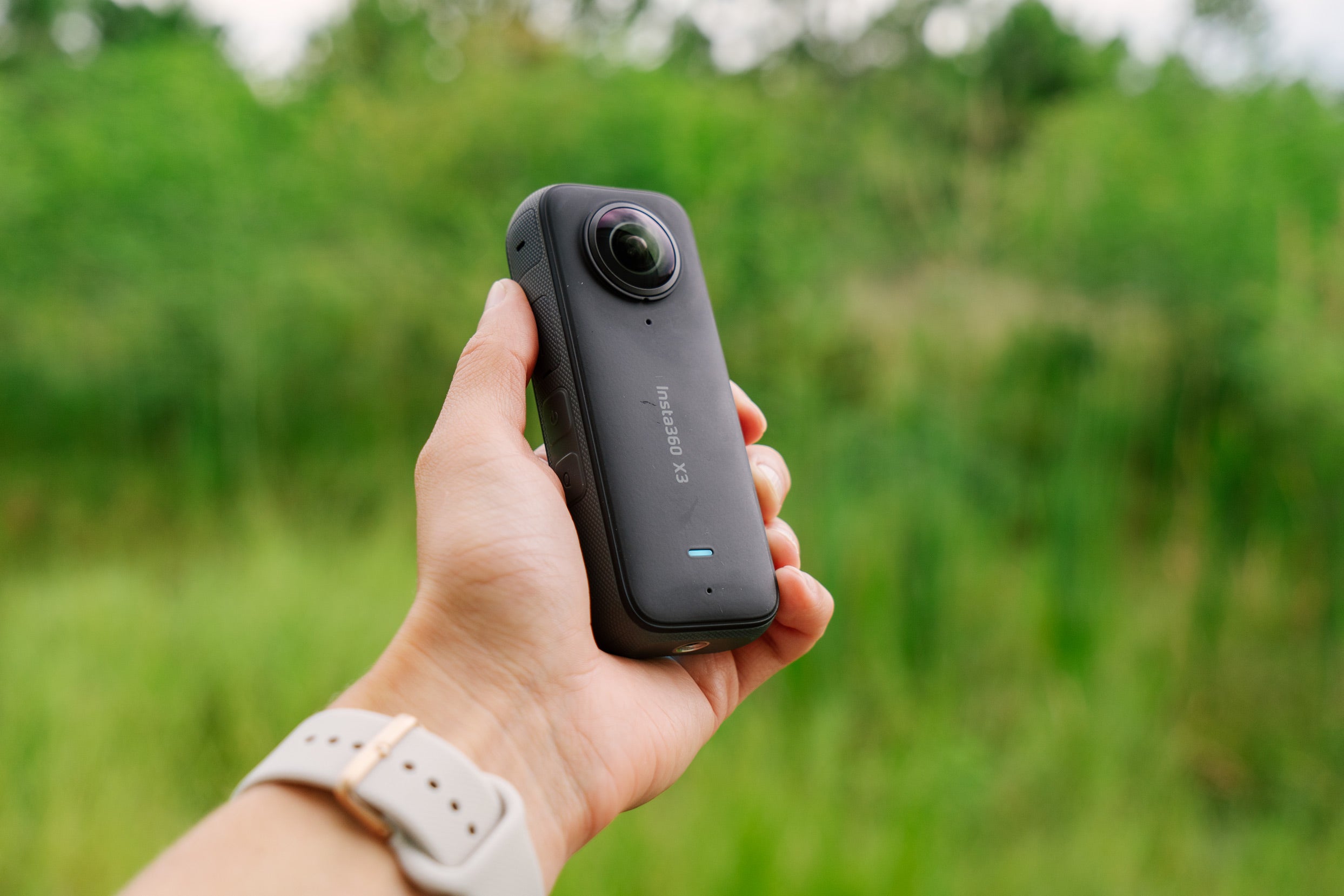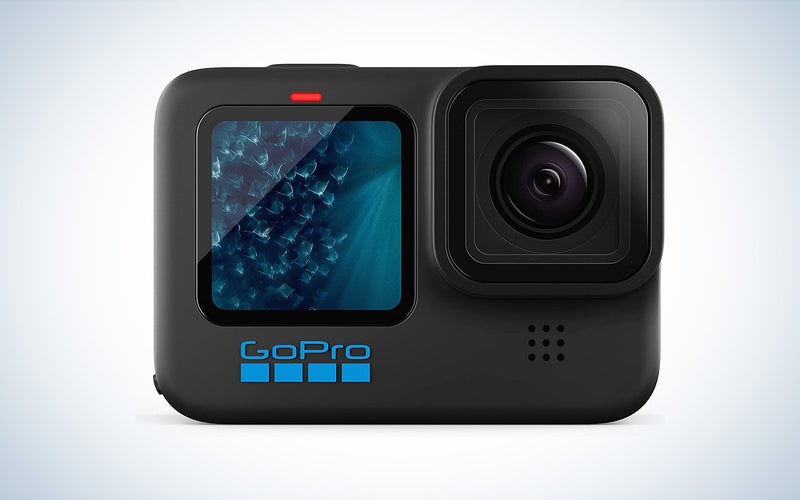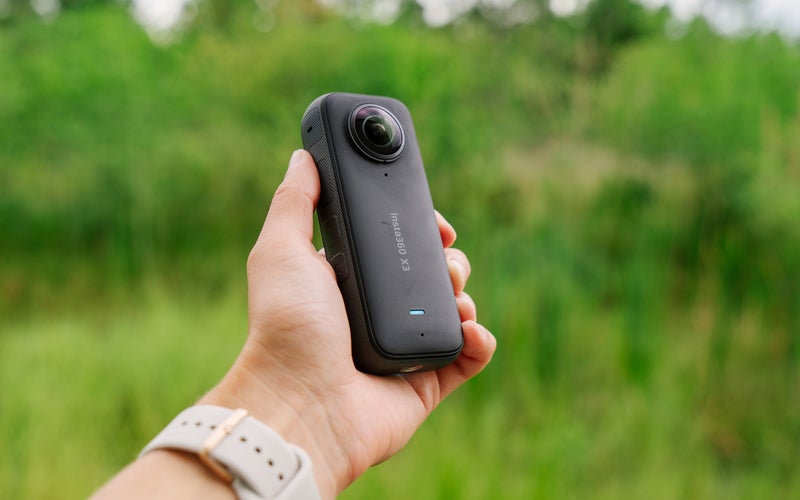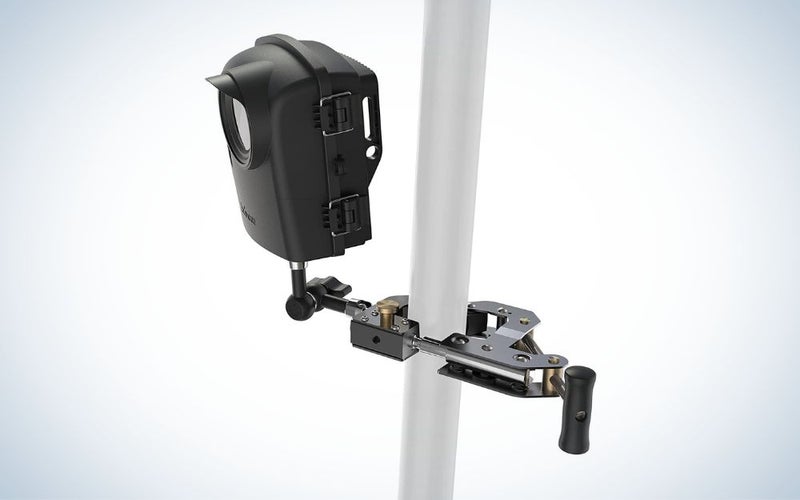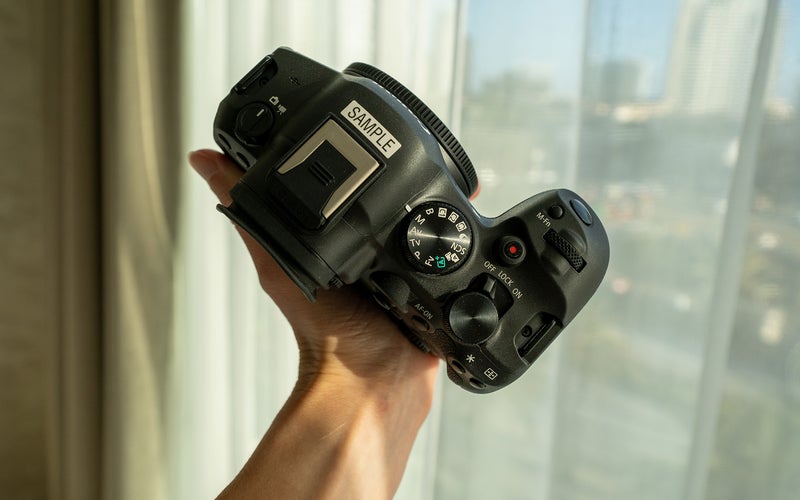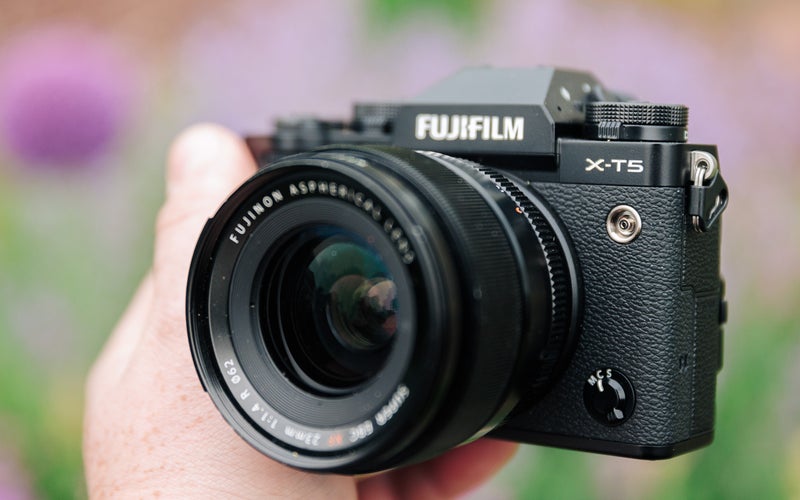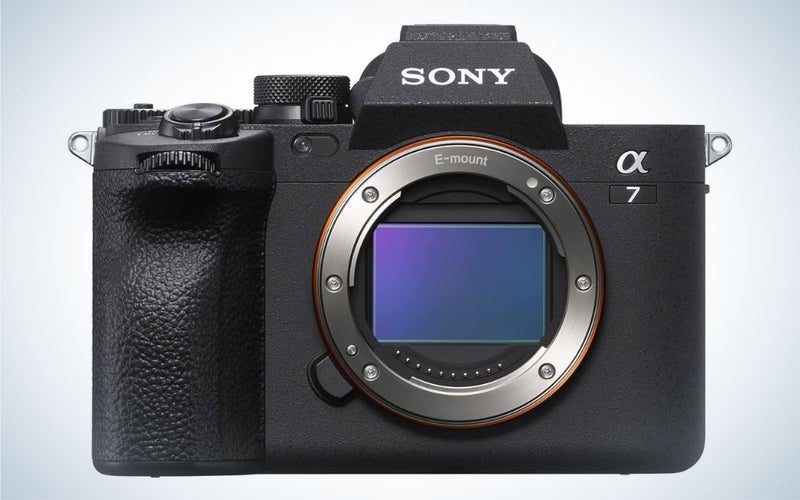We may earn revenue from the products available on this page and participate in affiliate programs. Learn more ›
With the right skills and gear, just about any camera can be a timelapse camera. Some, however, make it much easier than others when it comes to capturing epic time-compressed scenes. For the unfamiliar, time lapse photography involves capturing many consecutive photos at regular intervals, then compressing them into a video that depicts a long period of time in a much shorter clip. It’s handy for showing how long projects progress, documenting the stars as they move across the sky, or creating epic scenes that defy reality. Time lapse photography requires some specific skill and knowledge to accomplish. It’s very easy to make a bad time lapse. But all good projects start out with the right gear. We have selected the best time lapse cameras from each brand, as well as some catch-all options that will work no matter what camera system you typically use.
- Best Nikon (and best overall): Nikon Z6 II
- Best for beginners: GoPro Hero11 Black
- Best for 360-degree time lapses: Insta360 X3
- Best dedicated time-lapse camera: Brinno BCC2000
- Best Canon: Canon R6 Mark II
- Best Fujifilm: Fujifilm X-T5
- Best Sony: Sony A7 IV
How we picked the best time lapse cameras
I have been a photographer and photography editor for nearly two decades, much of that time spent here at Popular Photography. I have used and reviewed nearly every major camera release in recent years and I’m a total nerd when it comes to trying out every feature a camera offers. For this article, I relied on a mixture of personal experience, industry knowledge, editorial reviews, user feedback, and spec comparisons.
While I gave credit to cameras with the most advanced built-in time lapse features, I also considered the camera’s overall performance. Time lapse is typically just a part of what people do with their cameras. We broke them down by system because people typically already have lenses and don’t want to switch. If you’re just buying into a system and want the best time lapse features, however, both Nikon and Sony (in that order) do an excellent job.
The best time lapse cameras: Reviews & Recommendations
It’s time to get to our picks for the best time lapse cameras. We’ve broken them down by brand and also offered a few universal options that won’t require you to buy into an entirely new camera system.
Best Nikon (and best overall): Nikon Z6 II
Nikon
Specs
- Resolution: 24.5 megapixels
- Sensor size: Full-frame
- Lens mount: Nikon Z
- Image stabilization: Sensor-Shift, 5-Axis
- Memory card slots: Slot 1: CFexpress Type B / XQD, Slot 2: SD/SDHC/SDXC (UHS-II)
- Weight: 1.4 pounds
- Dimensions: 5.3 x 4 x 2.7 inches
Pros
- Class-leading time lapse functionality
- Excellent low-light performance
- Solid handling
- Compact
- Great overall image quality
Cons
- Some software time limits for extreme situations
If you don’t want to carry around a dedicated intervalometer, Nikon offers more robust time lapse features than any other manufacturer. The Z6 II shoots time lapses with intervals between half a second and 24 hours, with many stops in between. It can shoot up to 9,999 photos as part of a single capture sequence. Thanks to its ample processing power, it can capture both raw files and a 4K video of the time lapse you’re shooting at the same time. So, you can immediately have a high-res time lapse video as well as all the raw elements to make your own version if you want to tweak it later.
When it comes to focus smoothing, it works in just about every mode, including important ones like aperture priority, shutter priority, and even program. It shoots silently (like mirrorless cameras typically do), and it can draw power via USB-C from a battery bank, so you can worry much less about running out of juice mid-time-lapse.
Beyond its time-lapse-specific features, the 24.5-megapixels backside-illuminated sensor offers excellent overall image quality, especially in low-light situations. During regular shooting, it also offers desirable mirrorless qualities like advanced focus tracking and exposure modes.
If you can’t justify the price of the Z6 II, the original Z6 offers many of the same time lapse features of its newer sibling for a considerably lower price. The D750 DSLR is also a great option. It’s built like a tank and gets excellent battery life.
Best for beginners: GoPro Hero 11 Black
GoPro
Specs
- Resolution: 27 megapixels
- Sensor size: Not provided
- Lens mount: Not applicable (built-in lens)
- Image stabilization: Digital
- Memory card slots: microSD/microSDHC (UHS-I)
- Weight: 4.5 ounces
- Dimensions: 2.8 x 2 x 1.3 inches
Pros
- Compact
- Waterproof
- Ample time lapse shooting options built-in
- Fantastic image stabilization
- App control of the camera
Cons
- No interchangeable lenses
Most people think of the GoPro as a pure action camera meant for shooting high-speed scenes like sports. The GoPro also has a surprisingly robust set of built-in time lapse tools that can handle a variety of different situations.
The GoPro offers a Time Warp mode, which engages the camera’s advanced image stabilization functions. So, you can walk around the city with the GoPro on a stick or a mount and get a super-smooth, high-speed version of your journey.
Time Lapse mode allows the camera at intervals between half a second and one hour for a more typical experience. It uses the regular wide-angle lens to capture this footage, which it can spit out as 4K video.
Night Lapse mode specifically addresses shooting time lapse in the dark. It employs longer exposures at regular intervals to create dynamic scenes in reduced light. The GoPro’s small sensor can’t compete in pure image quality when it comes to mirrorless cameras with much larger sensors. But the GoPro offers one of the simplest ways to start shooting time lapse. Plus, it’s waterproof and rugged by its very nature, so you don’t have to worry about the elements affecting it during the shoot.
Best for 360-degree time lapses: Insta360 X3
Abby Ferguson
Specs
- Resolution: 48 megapixels
- Sensor size: ½-inch
- Lens mount: Not applicable (built-in lens)
- Image stabilization: Digital
- Memory card slots: microSD/microSDHC (UHS-I)
- Weight: 6.3 ounces
- Dimensions: 4.5 x 1.8 x 1.3 inches
Pros
- Waterproof without a case
- Various time lapse modes for photo and video
- Lots of mounting options
- Easy to use
Cons
- No interchangeable lenses
- No single-lens time lapse options
If you want truly immersive time lapses, or want the flexibility of being able to reframe while editing, the Insta360 X3 360 camera is the way to go. It features multiple time lapse modes—including TimeShift, Timelaps, Starlapse, and interval shooting—that all utilize its dual fisheye lenses to create dramatic results. And you can mount in in many different ways with Insta360’s handy accessories, so you can go totally hands-free for your time lapse shoots.
Like the GoPro, the X3 is ruggedly built with an IPX8 rating. It is waterproof to 33 feet without a case but can go even deeper with a dive case. You’ll be able to record time lapse content in some seriously rough conditions without worrying about the camera. And you can pair your phone to the camera in order to use your phone as a remote.
Of course, as an action camera, this won’t provide the same quality as a full-frame mirrorless camera. And 360 photos and videos do have a steep learning curve in terms of editing. But if you want unique results, this camera is a fantastic choice.
Best dedicated time-lapse camera: Brinno BCC2000
Brinno
Specs
- Resolution: 1920 x 1080
- Sensor size: Not provided
- Lens mount: Not applicable (built-in lens)
- Image stabilization: None
- Memory card slots: microSD/ microSDHC/ microSDXC
- Weight: 3 ounces (without batteries)
- Dimensions: 2.4 x 2.8 x 1.7 inches
Pros
- Very easy to set up
- Battery can last up to a year with additional cells in the optional case
- Waterproof and fine outside
- Sturdy clamp to keep it in place
Cons
- Not great for artistic pursuits
This is an industry-oriented camera meant to keep track of outdoor scenes over a long period of time. For instance, maybe you want to track the progress of a house or building as it goes up. This camera would excel in that situation. The camera itself relies on a pair of AA batteries, but with the additional waterproof case, you can add an extra 16 for a total of 18 AA batteries. That gives the camera enough juice to last for up to a year with the right shooting conditions.
The case also makes the camera totally waterproof and ruggedized, so it can stay outside in the elements without issue. A sturdy metal clamp can hold the camera in just about any area. The camera records the images to a video file that it stores on a microSD card.
This is a simple, functional time lapse solution.
Best Canon: Canon R6 Mark II
Abby Ferguson
Specs
- Resolution: 24. megapixels
- Sensor size: Full-frame
- Lens mount: Canon RF
- Image stabilization: Sensor-Shift, 5-Axis
- Memory card slots: Dual slot: SD/SDHC/SDXC (UHS-II)
- Weight: 1.3 pounds
- Dimensions: 5.4 x 3.9 x 3.5 inches
Pros
- Excellent overall image quality
- Great low-light performance
- Video and still time lapse mode
- Exposure smoothing in video mode
Cons
- Pricey
Canon’s mid-level full-frame mirrorless camera offers excellent image quality across the board as well as a solid suite of time lapse features. You can choose from either time lapse photos or a finished video file, and the options at your disposal change depending on what you choose.
The video mode offers the easiest capture opportunities. The available intervals span from two seconds up to several days, so you could make a years-long time lapse video if you had constant power and didn’t mind tying up your camera for that much time. Time lapse videos allow for automatic exposure modes with exposure smoothing, but it’s capped at just 3,600 total images.
The time lapse photo mode takes a little more skill and planning, but it extends the minimum interval down to one second and provides very detail-heavy raw files for each image. This is the option you’ll want to use if you’re willing to do some heavier post-processing.
This is a great all-around camera with a full-frame sensor and Canon’s current RF mount, which also works flawlessly with older EF glass.
If you’re looking for a budget Canon pick, the 6D Mark II DSLR is an excellent choice, and it’s roughly half the price of the R6 Mark II. At 26.2 megapixels, it offers slightly more resolution than the R6 Mark II, and it also gets excellent battery life because it’s a DSLR instead of a mirrorless camera. You could also opt for the original R6, which gives you a mirrorless body with much of the same tech as the R6 Mark II but for $200 cheaper.
Best Fujifilm: Fujifilm X-T5
Stan Horaczek
Specs
- Resolution: 40.2 megapixels
- Sensor size: APS-C
- Lens mount: Fujifilm X
- Image stabilization: Sensor-Shift, 5-Axis
- Memory card slots: Dual slot: SD/SDHC/SDXC (UHS-II)
- Weight: 1.2 pounds
- Dimensions: 5.1 x 3.6 x 2.5 inches
Pros
- Excellent weather sealing
- Smaller and lighter than most other cameras on the list
- Excellent lenses
- Great tactile controls
- Still and video time lapse
Cons
- Still not as good as a full-frame camera in very low light
Fujifilm’s X-T5 camera is good at pretty much everything. It’s relatively light and compact thanks to its APS-C sensor inside, but it offers robust weather sealing. That’s essential if you’re planning to spend a long time outside shooting time lapse.
In time lapse photo mode, the camera relies on its built-in intervalometer, which allows you to set the space between each shot as well as the total number of shots you want to take. You can delay the start of shooting if you want it to begin at a specific time, and you won’t be near it to press the shutter button.
In time lapse video mode, you have similar shooting options, but you can choose to output the footage at up to 4K 30 fps resolution. The camera can also record both stills and video at the same time if you want to end your time lapse session with options.
If you’re looking for a cheaper Fujifilm option, the X-T30 II offers similar time lapse shooting modes and overall performance for less money.
Best Sony: Sony A7 IV
Sony
Specs
- Specs
- Resolution: 33 megapixels
- Sensor size: Full-frame
- Lens mount: Sony E
- Image stabilization: Sensor-Shift, 5-Axis
- Memory card slots: Slot 1: CFexpress Type A / SD (UHS-II), Slot 2: SD/SDHC/SDXC (UHS-II)
- Weight: 1.4 pounds
- Dimensions: 5.2 x 3.8 x 3.1 inches
Pros
- Excellent low-light performance
- Fantastic overall performance
- Bright monitoring is very handy for compositions
- Solid weatherproofing
- Great lens options
Cons
- You have to convert your own images to a video with software
The A7 IV is the best all-around Sony camera for most people, and it’s also its best time lapse camera. It has a full-featured built-in intervalometer that captures full-res raw images at 33 megapixels. You can choose intervals between one second and 60 seconds for up to 99 minutes and 99 seconds. That’s long enough for most uses but not as long as some other options on the list.
You can delay the start of the time lapse shooting to reduce camera shake or absolve yourself of having to be near the camera when the action begins. If the shutter speed becomes longer than the interval, it can adapt on the fly to prevent your time lapse from getting screwed up.
Sony has added one unique feature to the A7 IV. It’s called bright monitoring, and it gives a real-time look at dark scenes that have been brightened to reveal your final composition. So, if you’re trying to capture the night sky against some trees with a long exposure, the camera will actually increase the gain in the sensor until you can see the stars as they’ll look in your final image. It’s very handy for capturing the milky way or other elaborate night sky scenes. If you can’t afford the A7 IV, then the A7 III offers many of the same features, including bright monitoring, for much less money.
Things to consider when shopping for the best time lapse cameras
Built-in time lapse modes are great, but there’s a lot more to consider when shopping for the best time lapse cameras. Here are some critical specs and features to consider when you’re browsing the market.
Built-in intervalometer
In the old days, manual cameras required a stand-alone intervalometer in order to fire the camera’s shutter on a regular schedule. Now, many cameras include baked-in time lapse features that make the process a lot simpler and eschew the need for an extra piece of gear.
Some built-in time lapse modes are better than others. You want a mode that gives you flexibility when it comes to variables like the format of the time lapse and how many frames it captures every minute.
Low-light performance
Night time lapses can create some truly phenomenal imagery, especially when you start to integrate stars and the trails they leave as they move across the sky in front of an open camera shutter. Shooting in the dark also adds an extra layer of challenge to the equation, and choosing a body with solid low-light performance will help a ton.
You don’t simply want to find the camera with the highest maximum ISO. You want a camera that will provide clean, low-noise images at reasonably high ISOs. While full-frame sensors typically do an excellent job of this, they’re not absolutely essential. You’ll find a mixture of full-frame, APS-C, Micro Four Thirds, and even smaller sensors on this list.
Exposure smoothing
Even if a camera has a built-in intervalometer, it may still leave you with irregular, inconsistent, or flickering exposures. Some cameras offer a feature called exposure smoothing, which automatically adjusts the exposure of the individual frames to make changes more gradual and results more consistent. If you’re shooting a time lapse of a sunrise, for instance, it will start in the dark and end in full daylight. That’s a big jump in exposure. You’ll likely want a camera that can automatically accommodate that change unless you want to manually babysit it the whole time.
Battery life
Time lapse shooting can be hard on a camera’s battery. You need it to last long enough to cover the entirety of your shoot. And while many cameras charge via USB-C, you can’t rely on charging them with a portable power bank or other power source out in the wild. Some may allow for external power when it comes directly from an outlet, but that’s not very handy when you’re out in the world.
Time lapse video vs. traditional time lapse
Some cameras offer simple intervalometers that capture typical photos in a regular cadence as the scene unfolds in front of it. At the end of the process, you’re left with a collection of regular (likely raw) photos that video editing software can mash into a clip. Some cameras skip the typical photo step and mash the photos together into a video for you. As a result, you don’t have to worry about creating the clip yourself in software later on. If you want maximum control, the individual photo method can be desirable. It’s also handy if you want to do something like exposure stacking in which you lay many of the same files over the top of each other to show movement happening in the frame. That’s a common technique for making star trail photos that wouldn’t be possible in a single long exposure.
Maximum photo count
Cameras typically have a maximum photo count when it comes to time lapse modes. It’s often just under 1,000 shots. If you want to go longer than the camera’s built-in capabilities, you’ll need extra equipment.
Weatherproofing
Many time lapse shoots happen outside where the elements can cause problems. Even if it’s not raining outside, drastic changes in temperature and humidity can play havoc with your equipment. Paying extra for gear that’s weather-sealed could make a huge difference in your time lapse shooting experience.
FAQs
Q: How much do time lapse cameras cost?
Most modern system cameras like DSLRs and mirrorless models have some time lapse features built in already. Those range from under $1,000 to $5,000 or more. The GoPro can cost as low as $399 for the most recent model and that’s a great way to dip your toe into time lapse. Some dedicated time lapse cameras aren’t meant for artistic work, but rather monitoring scenes over a long time. They’re more for construction sites and other commercial areas. Those cost anywhere from $200 to $600.
Q: How do you shoot a time lapse?
Time lapse photography is a skill that could occupy entire books. But, it’s easy to get started with experimenting. Check your camera’s manual for how to enable the time lapse features. If you’re averse to reading the manual, you can probably find those features by digging around in the menus. Experiment with different intervals. If you’re capturing something slow-moving, use longer intervals. Shorter intervals work for faster-moving scenes.
Q: How long can I record time lapse?
Some cameras limit the length of their time lapse features from 99 minutes and 99 seconds to much longer periods of hours, weeks, or days. Of course, you’ll need to make sure you have continuous power as well as enough space on the memory card to record all of those images. Dedicated time lapse cameras can go for a year with enough batteries inside.
Final thoughts about the best time lapse cameras
- Best Nikon (and best overall): Nikon Z6 II
- Best for beginners: GoPro Hero11 Black
- Best for 360-degree time lapses: Insta360 X3
- Best dedicated time-lapse camera: Brinno BCC2000
- Best Canon: Canon R6 Mark II
- Best Fujifilm: Fujifilm X-T5
- Best Sony: Sony A7 IV
The Nikon Z6 II takes the crown for the best time lapse camera in our opinion. It’s a solid all-around shooter, but it also offers the most robust set of time lapse features we’ve found on a body yet. If you’re just looking to dip a toe into time lapse, the GoPro really is an excellent choice that’s easy to use, easy to carry around, and very cheap compared to the system cameras on this list.
Why trust us
PopPhoto has a long history of delivering the opinions of some of the sharpest and most prolific camera dorks the world has to offer. Since 1937, we’ve been reviewing cameras, providing wisdom from well-known photographers, and generally just nerding out about all that goes into making great pictures. Our current crop of writers and editors have decades of professional photography and camera writing experience among them. Collectively, we’ve probably shot with just about every camera and lens combo you can imagine—as well as some obscure stuff you may not even know about. Remember the Casio Tryx folding camera? PopPhoto does.
We also get that buying a camera is a big decision, which is why we’re dedicated to helping folks choose the right one (or, in our case “ones”) for their needs. Case in point: Handing over top dollar for an expensive rig may leave you unsatisfied if it doesn’t fit your preferred shooting style. Sure, a $6,000 sports-oriented DSLR can capture landscapes, but do you really need to do it at 30 frames-per-second? No, you don’t.
